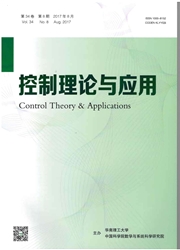

 中文摘要:
中文摘要:
变电站电压无功控制是电网混成自动电压控制(hybrid automatic voltage control,HAVC)系统的重要组成部分,其控制措施一般包括变电站有载调压变压器(OLTC)的调节和站内电容电抗器的投切等.变电站电压无功控制器设计是一个典型的多目标优化问题,即在调控过程中,既要控制无功及电压尽量接近设定值,又必须使OLTC的调节次数和电容电抗器的投切次数尽量少.因此,本文首先建立了HAVC系统变电站电压无功控制的多目标优化模型,然后求解该多目标优化问题得到变电站电压无功优化控制策略.对东北电网沙岭变电站的仿真分析证明了所提出的控制策略的有效性和正确性.
 英文摘要:
英文摘要:
Voltage and reactive power control for a substation is an important part of the power grid hybrid automatic voltage control(HAVC) system. In substations, on-load tap changer(OLTC), shunt capacitors and reactors are widely used as control measures. The design of voltage and reactive power controller in substations is a typical multiobjective optimal problem. That is, the voltage of the secondary bus should trace the desired value as closely as possible, and the number of regulations of OLTC and capacitors should be minimized to protect the equipment. In this paper, a multiobjective optimal model for substation voltage and reactive power control system is built, and the corresponding algorithm is proposed. Based on this algorithm, a multi-objective optimal control strategy of substation HAVC system is designed. The simulation results of Shaling substation in Northeast China demonstrate the effectiveness and correctness of this strategy.
 同期刊论文项目
同期刊论文项目
 同项目期刊论文
同项目期刊论文
 New research advancement in electrical engineering field of China-Reviews on special issue of Scienc
New research advancement in electrical engineering field of China-Reviews on special issue of Scienc Speed regulation of permanent magnet synchronous motor via feedback dissipative Hamiltonian realizat
Speed regulation of permanent magnet synchronous motor via feedback dissipative Hamiltonian realizat 期刊信息
期刊信息
